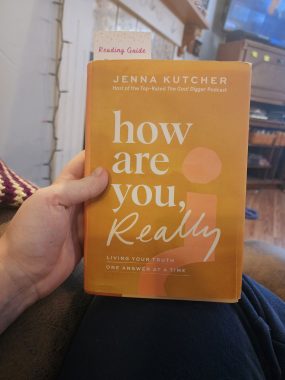How Traffic Lights Can Help Explain Energy Levels With MG
The analogy might make it easier for others to understand the disease
Written by |

“Red light!”
“Green light, … red light!”
Are you smiling as you remember playing Red Light, Green Light in the schoolyard as a child? I have a smirk on my face as I sit here writing it.
The other morning, while scrolling through social media and waiting for my medications to kick in, I stumbled across an Instagram post from Neuro Connections, a Canadian company that provides communication, cognitive, and swallowing services.
The post, shared last July, uses traffic lights to explain how people with health conditions navigate various tasks, with green being the easiest tasks and red being the most difficult. The caption explains how pacing ourselves can help us balance activities and manage daily life.
Neuro Connections expands on the analogy in another post shared last month, explaining how someone might feel on “green,” “yellow,” or “red” days, and how others can support them.
It was an eye-opening analogy, and I believe it can help others understand what living with myasthenia gravis is like.
Analogies
Longtime readers of my column may remember my dinner plate theory, which expanded on the popular spoon theory to help explain daily energy levels. I’ve also seen people with chronic illness compare their energy levels to a battery that never charges all the way.
It seems like we’re always searching for ways to help others understand us. I’m not sure if it’s because we’re looking for empathy, sympathy, community, acceptance, or to simply be seen and heard. Regardless, I really like the traffic light analogy.
Green light
Green means we are feeling good, can fully participate (depending on what’s typical for our abilities), and have the desire to engage. I appreciate that the analogy considers both the physical and emotional toll of activities. Let’s be real, there are days when I feel great but want absolutely nothing to do with the world. My ability to “people” is nonexistent.
Green tasks are the easiest to perform and pose little to no risk of triggering our symptoms. In terms of the spoon theory, these activities might only require one spoon or less. For me, green tasks include scrolling through social media, making a pot of coffee, talking with friends about lighthearted topics via text-based applications, reading, and crocheting.
Neuro Connections notes that, during green times, others can support us by inviting us to social activities and conversations. It’s also a good time for important conversations or decision making.

Reading is one of columnist Shawna Barnes’ “green light” activities. (Photo by Shawna Barnes)
Yellow light
Under the yellow light, we might be getting tired and need to take more frequent breaks or switch to a less-taxing activity.
Yellow tasks are moderate and may require extra breaks to minimize or avoid symptom exacerbations. For me, this means sitting at the computer to write or work on website design, printing stickers, having conversations via phone or video call, going for a walk with my walker or cane, playing with the dogs, and being intimate with my husband. I’d say this kind of activity would require three or more spoons.
Others can support us by not bringing up important or difficult topics in conversation, helping us monitor our symptoms, and encouraging us to take regular breaks.
Red light
Under the red light, we are exhausted. Rest is no longer an option, and we may need to retreat to a quiet or dark place.
Red tasks are the most difficult to accomplish and will undoubtedly cause a symptom exacerbation or flare-up, regardless of how many breaks we take. I’d consider red activities to be grocery shopping, running errands, spending time outside when it’s warmer than 78 degrees, going up and down stairs, crying, big belly laughing, and eating excessively chewy or tough foods.
Others can support us by acknowledging that we need downtime, giving us space, and understanding our need for rest without feeling resentful or annoyed.
Final thoughts
I think this analogy can benefit the myasthenia gravis community, as it’s easy to understand and can be applied to our individual circumstances. However, while Neuro Connections suggests that others can support us by offering understanding without resentment, I want to note that it’s OK for people to be hurt when plans change. They can still be sympathetic and understanding, but disappointment is a valid response.
Do you think the traffic light analogy works? Please share your thoughts in the comments below.
Note: Myasthenia Gravis News is strictly a news and information website about the disease. It does not provide medical advice, diagnosis, or treatment. This content is not intended to be a substitute for professional medical advice, diagnosis, or treatment. Always seek the advice of your physician or other qualified health provider with any questions you may have regarding a medical condition. Never disregard professional medical advice or delay in seeking it because of something you have read on this website. The opinions expressed in this column are not those of Myasthenia Gravis News or its parent company, Bionews, and are intended to spark discussion about issues pertaining to myasthenia gravis.







Greg Clarke
I think the traffic light analogy is a little to "coarse" in my case. I have mostly ocular symptoms and fatigue late in the day. Spoon theory works very well and my wife understands it. "I only got 12 spoons today" means I don't want to go to that social event. "25 spoons, lets take a road trip."
If you like, you could work on a way to describe the following...
Avoiding events that would wear me out, have little benefit to me or society, expose me to Covid and other possible infections. Example: "The children's choir is singing this Sunday and we're just in the choir loft for support. I'll stay home." or "We just ate out with those folks 3 days ago, go on without me."
On the other hand, I gladly attend events that I enjoy or have great societal l value where the payback is greater than the risk of infection or fatigue Example: I still manage the church Blood Drive, an 8 hour ordeal, setup, tear down, and with dealing with the public. also, I'll perform bluegrass music, just about anywhere and anytime I can get there safely.
My wife understands it but we don't have a way to describe it. It's sort of like being able to earn a few extra spoons for quality of life or service to other's events.